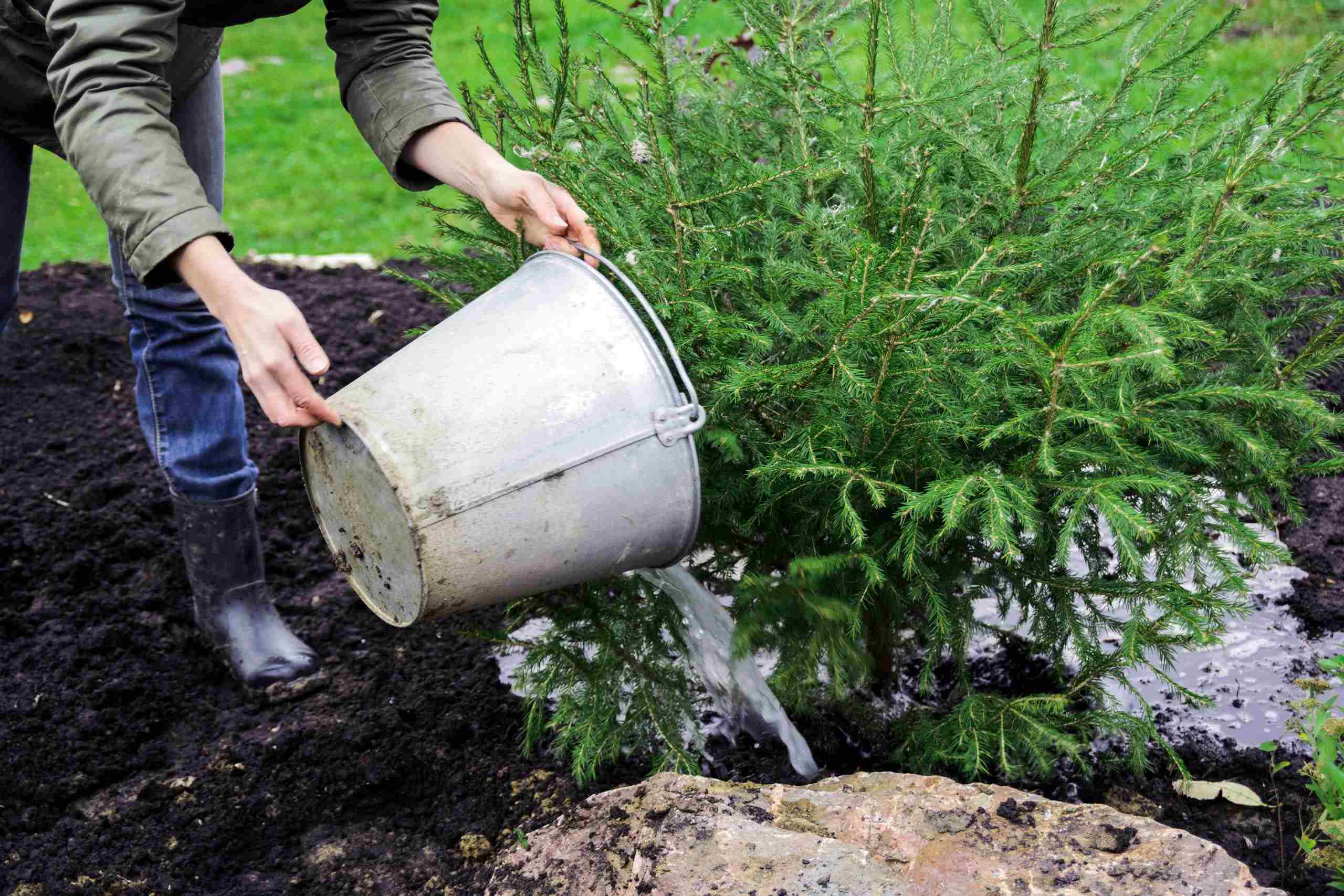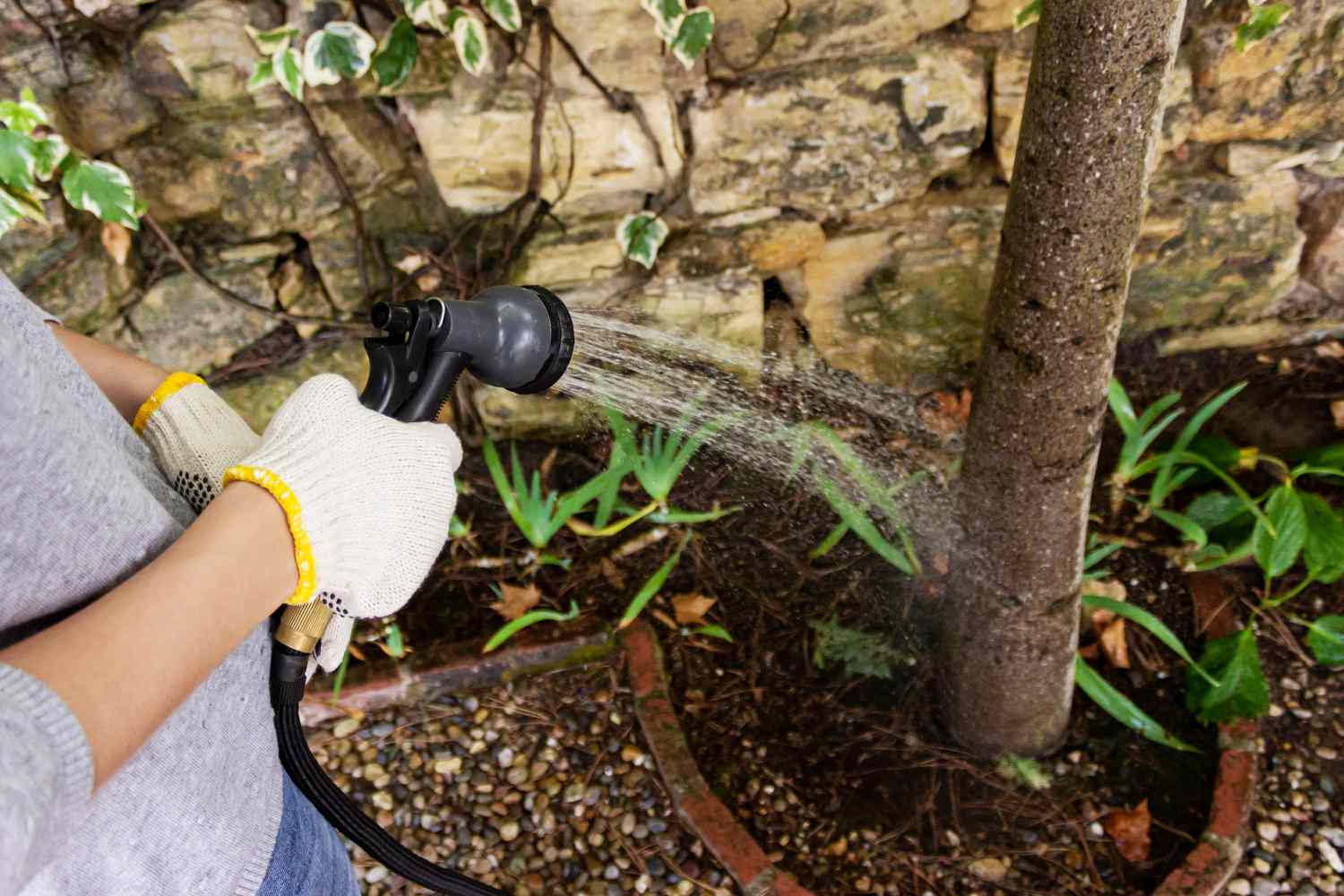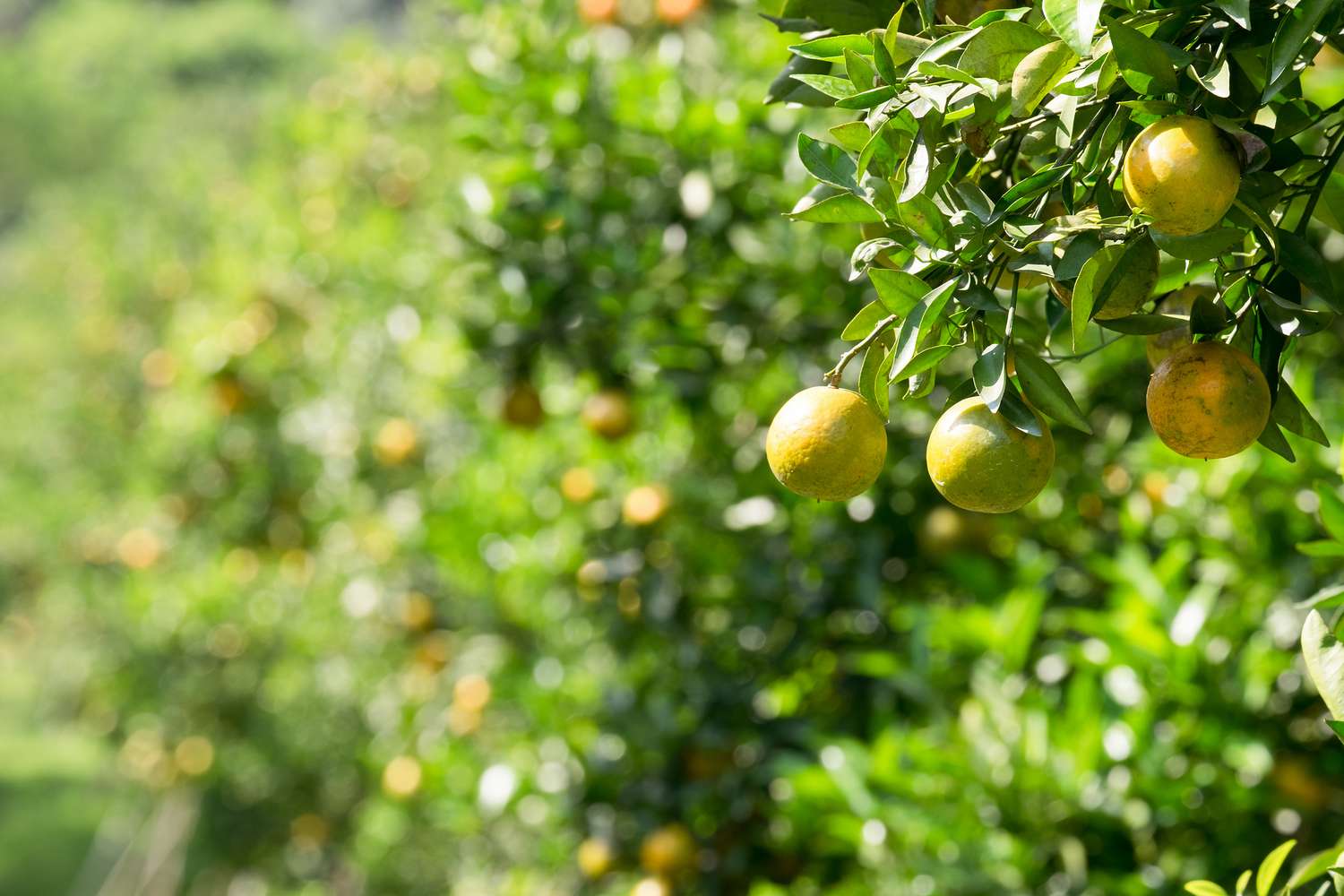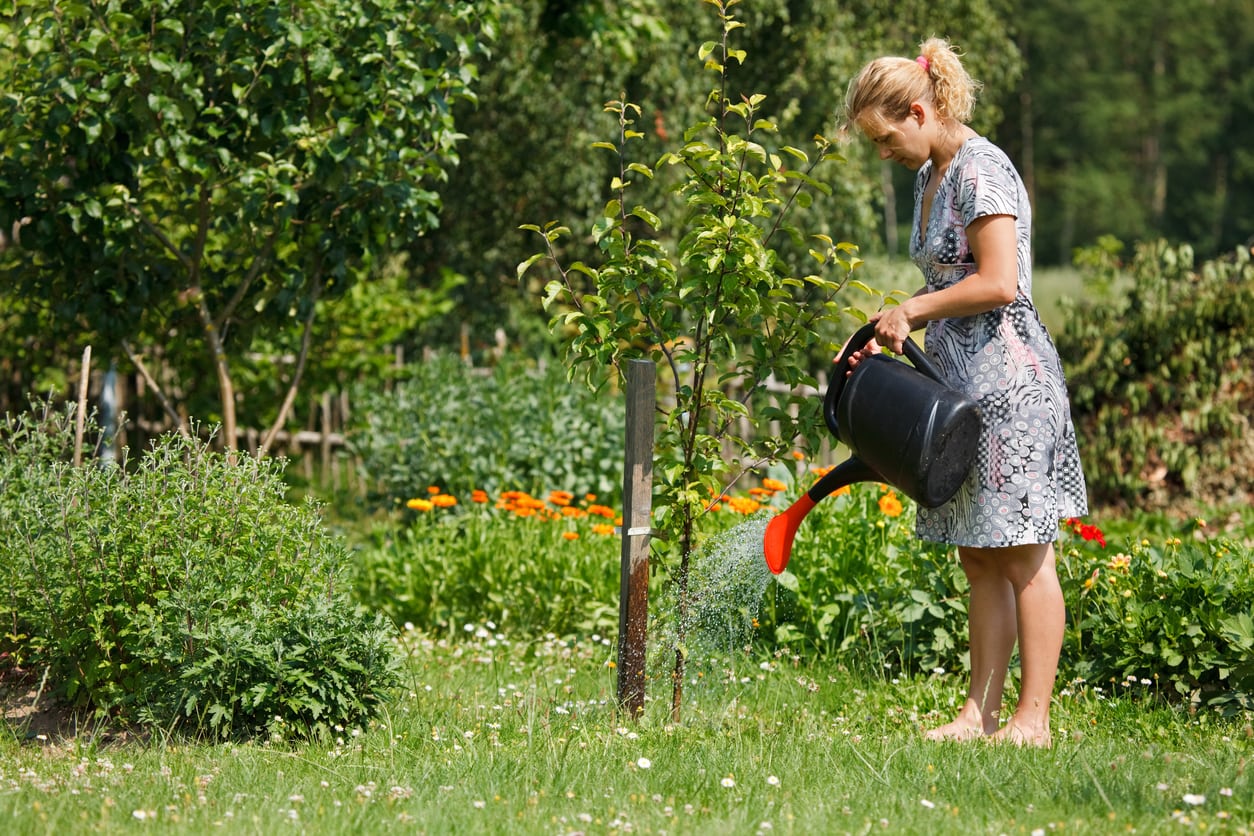Home>Gardening News and Trends>Latest News>How Would Planting Trees Most Affect The Water Cycle


Latest News
How Would Planting Trees Most Affect The Water Cycle
Modified: February 8, 2024
Discover the Latest News on How Planting Trees Can Positively Impact the Water Cycle. Explore the Benefits and Importance of Tree Planting for a Sustainable Environment.
(Many of the links in this article redirect to a specific reviewed product. Your purchase of these products through affiliate links helps to generate commission for Chicagolandgardening.com, at no extra cost. Learn more)
Table of Contents
Introduction
The water cycle is a vital process that ensures the circulation and availability of water on Earth. It plays a crucial role in maintaining the planet’s ecosystems, supporting agriculture, and supplying drinking water to communities. However, with the growing impact of climate change and urbanization, the water cycle is facing unprecedented challenges.
One of the key factors affecting the water cycle is deforestation, which disrupts the natural balance of moisture and precipitation. As trees are cut down, the land becomes more vulnerable to erosion, water runoff, and soil degradation. These destructive activities not only reduce the water-holding capacity of the soil but also increase the risk of flooding and water pollution.
Recognizing the importance of the water cycle, scientists and environmentalists are advocating for tree planting as a means to restore and improve water circulation. Planting trees has been proven to have a positive impact on the water cycle, helping to mitigate the effects of climate change and create a sustainable environment.
This article will explore the role of trees in the water cycle and how their presence can significantly influence various aspects of this important process. We will delve into the concepts of transpiration, rainfall, evaporation, and the filtering effect of trees. Additionally, we will discuss the implications of tree planting on groundwater recharge and watershed health. Finally, we will explore the best strategies for tree planting to effectively manage the water cycle.
By understanding the relationship between trees and the water cycle, we can work towards implementing sustainable practices that enhance the health of our ecosystems and ensure a reliable supply of clean water for future generations.
Importance of the Water Cycle
The water cycle, also known as the hydrological cycle, is a fundamental process that ensures the continuous circulation of water on Earth. It plays a vital role in maintaining the planet’s ecosystems, supporting life, and sustaining various human activities.
One of the primary benefits of the water cycle is its role in regulating the Earth’s temperature. Through the process of evaporation, water from oceans, lakes, and rivers is converted into water vapor, which rises into the atmosphere. As the water vapor condenses, it forms clouds and eventually falls back to the Earth’s surface as precipitation in the form of rain or snow. This natural process helps cool the planet and regulate global temperatures.
In addition to temperature regulation, the water cycle is also crucial for sustaining plant and animal life. It provides the necessary moisture for plants to grow, allowing them to produce oxygen, absorb carbon dioxide, and contribute to the overall balance of the atmosphere. The water cycle also supports the survival of various animal species by providing them with drinking water and maintaining their habitats.
The water cycle is essential for agricultural activities as well. By delivering precipitation, it ensures that crops receive the necessary water for growth and production. Farmers rely on a healthy water cycle to cultivate food, maintain livestock, and sustain rural economies.
Furthermore, the water cycle is integral to the supply of clean drinking water. As water evaporates from the surface and rises into the atmosphere, it undergoes a natural purification process. The condensation of water vapor into clouds filters out impurities, ensuring that the precipitation that falls back to the Earth is relatively pure. This natural filtration process reduces the need for extensive human intervention in water treatment.
Overall, the water cycle is crucial for maintaining the balance and sustainability of our planet. It supports ecosystems, sustains life, regulates temperatures, facilitates agriculture, and provides clean drinking water. As such, it is vital that we understand and protect this delicate process to ensure a healthy and thriving environment for current and future generations.
The Role of Trees in the Water Cycle
Trees play a significant role in the water cycle and have a profound impact on the movement and distribution of water on Earth. They act as vital agents in regulating the flow of water, contributing to the overall health and sustainability of the water cycle.
One key way that trees influence the water cycle is through the process of transpiration. Transpiration is the release of water vapor from plant leaves into the atmosphere. Trees absorb water from the soil through their roots and transport it up to their leaves. Once in the leaves, water vapor is released through tiny openings called stomata. This moisture then evaporates and contributes to the humidity of the surrounding air. Transpiration not only helps to cool the tree itself but also increases atmospheric moisture levels, which can influence local weather patterns.
The tree canopy, formed by the branches and leaves of trees, also plays a critical role in the water cycle. When rainfall occurs, the tree canopy intercepts a portion of the water, reducing the force and speed of raindrops as they hit the ground. This interception allows for a more gentle and gradual release of water to the ground, minimizing soil erosion and improving water infiltration rates. The tree canopy also acts as a barrier, preventing direct rainfall impact on the soil surface and reducing the risk of surface runoff and subsequent water pollution.
In addition to reducing soil erosion, trees provide shade, which affects evaporation rates. When trees cast shadows, they create cooler microclimates beneath their canopy. This shade reduces the amount of direct sunlight exposure to the ground, resulting in lower evaporation rates. By reducing evaporation, trees help to conserve soil moisture and maintain a more balanced water cycle.
Another significant contribution of trees to the water cycle is their ability to act as natural filters. As water percolates through the soil, tree roots help to absorb and retain nutrients and pollutants, preventing them from leaching into groundwater or nearby water bodies. Trees also help to trap sediment, organic matter, and other pollutants in their root systems, improving water quality and protecting aquatic ecosystems.
Understanding the role of trees in the water cycle highlights their importance in sustaining a healthy hydrological system. By influencing transpiration, intercepting rainfall, reducing evaporation rates, and acting as natural filters, trees contribute to the overall balance and resilience of the water cycle.
Transpiration and Water Vapor
Transpiration is a vital process in the water cycle that involves the release of water vapor from plants into the atmosphere. It plays a substantial role in the movement and distribution of water, influencing weather patterns, humidity levels, and overall ecosystem health.
When trees and other plants absorb water from the soil through their roots, it travels up through their stems and into their leaves. Once in the leaves, water evaporates from tiny openings called stomata. This water vapor then diffuses into the surrounding air, increasing atmospheric moisture levels.
Transpiration serves several important functions in the water cycle. Firstly, it helps to cool the plant itself. Similar to how humans sweat to regulate body temperature, transpiration provides a cooling mechanism for plants. As water vapor is released from the leaves, it takes heat energy with it, thereby reducing the temperature of the foliage and the surrounding environment.
Additionally, transpiration plays a significant role in local and regional weather patterns. The release of water vapor into the atmosphere increases humidity levels, which can influence cloud formation and precipitation. As water vapor rises, it cools and condenses to form clouds. These clouds can then release precipitation in the form of rain or snow, contributing to regional rainfall patterns.
The process of transpiration also facilitates water movement through plants. As water is lost through transpiration in the leaves, it creates a “pulling force” that helps to draw more water up through the plant’s stem and roots. This upward movement of water, known as the transpiration stream, is essential for delivering water and nutrients to different parts of the plant.
Moreover, transpiration contributes to the overall water balance in ecosystems. By releasing water vapor into the air, plants help to reduce the amount of water stored in the soil, preventing waterlogging and maintaining a healthy balance of soil moisture. This moisture availability is crucial for supporting other organisms and maintaining ecosystem functions.
Overall, transpiration is a key process in the water cycle, driving the movement of water from the ground into the atmosphere. Its effects go beyond just plant health, impacting regional weather patterns, humidity levels, and ecosystem balance. Understanding the role of transpiration helps us appreciate the importance of trees and other vegetation in maintaining a robust and sustainable water cycle.
Tree Canopy and Rainfall
The tree canopy, formed by the branches and leaves of trees, plays a crucial role in the water cycle, particularly in influencing rainfall patterns. Trees impact rainfall in various ways, from intercepting precipitation to promoting atmospheric moisture and creating favorable conditions for cloud formation.
When rain falls, the tree canopy serves as a barrier, intercepting a portion of the precipitation before it reaches the ground. This interception reduces the impact of raindrops on the soil surface, preventing soil erosion and the compaction of the topsoil. By slowing down the rate of rainfall, trees also allow for a more gradual release of water into the ground, promoting better water infiltration and reducing surface runoff.
Furthermore, trees influence atmospheric moisture levels through a process called evapotranspiration. Evapotranspiration refers to the combined water loss through evaporation from the soil and transpiration from plant leaves. The canopy of trees, with its abundant leaves, facilitates transpiration and increases the amount of water vapor released into the air.
The release of water vapor by trees contributes to the overall humidity levels in the surrounding environment. Increased humidity can create favorable conditions for the formation of clouds. As water vapor rises and cools, it condenses around tiny particles in the air to form cloud droplets. These cloud droplets eventually grow and precipitate as rainfall.
The presence of trees can also affect the spatial distribution of rainfall. Research has shown that areas with a higher density of vegetation, including tree canopies, tend to receive more rainfall compared to barren or deforested areas. This is because trees influence wind patterns, creating microclimates that enhance local moisture levels and promote precipitation.
Besides their impact on rainfall quantity, trees can also influence the timing and duration of rainfall events. Their canopy acts as a buffer, slowing down the rate of rainfall and promoting longer periods of water release. This can help mitigate the risk of flash floods and improve water infiltration rates, allowing water to percolate into the ground and recharge groundwater sources more effectively.
Overall, the tree canopy has a significant influence on rainfall patterns. Through interception of precipitation, evapotranspiration, and the promotion of atmospheric moisture, trees contribute to the overall water balance and the distribution of rainfall. Understanding the role of tree canopies in the water cycle is essential for sustainable water management and ecosystem health.
Evaporation and Tree Shade
Evaporation is a natural process in the water cycle where water changes from a liquid state to a gaseous state and enters the atmosphere. Trees play a significant role in influencing evaporation rates, particularly through the shade they provide. The shade created by trees has several effects on evaporation, including reducing the amount of direct sunlight reaching the ground and maintaining a cooler microclimate.
When the sun’s rays directly hit the ground, they contribute to higher temperatures, which accelerate evaporation. However, the presence of trees casts shadows and creates shaded areas beneath their canopy. This shade helps to reduce the amount of direct sunlight reaching the ground, ultimately slowing down evaporation rates.
The shade provided by trees not only reduces the impact of direct sunlight but also helps to maintain a cooler microclimate. Areas that receive ample shade experience lower temperatures compared to areas exposed to direct sunlight. This cooling effect helps to mitigate evaporation, as lower temperatures reduce the energy available for water molecules to transition from a liquid to a gaseous state.
Furthermore, the shade created by trees helps to conserve soil moisture. When exposed to direct sunlight, the soil becomes heated, causing water to evaporate more rapidly. However, the shade provided by trees helps to insulate the soil, preventing excessive heat buildup and reducing evaporation rates. This allows for better retention of soil moisture, creating a more favorable environment for plant growth and minimizing water loss through evaporation.
Additionally, tree shade can have a positive impact on surface water bodies, such as lakes and rivers. When bodies of water are shaded, they experience decreased evaporation rates. This can help conserve water resources and prevent water levels from dropping too rapidly. The shade also helps to minimize the formation of algae blooms, which can occur with excessive sunlight exposure and lead to harmful effects on aquatic ecosystems.
It is worth noting that the shade provided by trees is not limited to the immediate area beneath their canopy. The shade can extend beyond the tree’s physical reach due to the scattering and reflection of sunlight. This extended shade contributes to reduced evaporation rates in the surrounding environment, further enhancing water conservation efforts.
In summary, tree shade plays a crucial role in influencing evaporation rates. By reducing direct sunlight and maintaining a cooler microclimate, tree shade helps to conserve soil moisture, reduce water loss, and preserve surface water bodies. Understanding the impact of tree shade on evaporation is vital for sustainable water management and maintaining a healthy water cycle.
Trees as Natural Filters
Trees offer a remarkable benefit as natural filters within the water cycle. As water percolates through the soil, tree roots play a vital role in absorbing and retaining pollutants and nutrients, effectively filtering the water before it reaches groundwater sources or nearby bodies of water.
Tree roots are adept at capturing and retaining various pollutants, such as heavy metals, fertilizers, pesticides, and sediment. As water moves through the soil, tree roots act as a natural barrier and intercept these pollutants, preventing them from leaching further into the groundwater. The roots then absorb and store these pollutants, effectively removing them from the water and reducing the risk of contamination.
In addition to their filtering capabilities, trees also facilitate the breakdown of organic matter. As water moves through the soil, tree roots excrete organic compounds and enzymes. These compounds and enzymes act as biological agents, breaking down organic matter and reducing the concentration of harmful substances in the water.
Furthermore, the root systems of trees help to stabilize the soil structure. By creating a network of roots, trees prevent soil erosion and reduce the transport of pollutants through runoff. The roots hold the soil in place, minimizing the displacement of sediment and preventing its entry into water bodies. This helps to maintain the quality of the water and preserves the integrity of aquatic ecosystems.
Another important aspect is the role of trees in the denitrification process. Excessive levels of nitrogen, primarily in the form of nitrates, can lead to water pollution and harm aquatic life. However, trees have the ability to absorb nitrates from the soil and convert them into a gaseous form through a process called denitrification. This conversion helps to reduce nitrate levels in the water, minimizing the risk of pollution and maintaining water quality.
The efficiency of trees as natural filters can be influenced by various factors, including tree species, soil type, and environmental conditions. Some tree species have exceptional filtering capabilities, while others may be more effective at retaining sediment and stabilizing soil. Understanding these factors can help in selecting the most appropriate tree species for water filtration purposes in specific environments.
Overall, trees act as remarkable natural filters in the water cycle. Through their root systems, they absorb and retain pollutants, stabilize soil structure, break down organic matter, and participate in the denitrification process. Their filtering capabilities are invaluable in preserving water quality and protecting ecosystems from the harmful effects of contamination.
Impacts on Groundwater Recharge
Trees play a crucial role in the process of groundwater recharge, which is the replenishment of underground water sources. Their presence and various mechanisms contribute to increased groundwater recharge rates, promoting water availability and sustainability.
One significant way trees impact groundwater recharge is through their root systems. Tree roots act as natural channels, allowing water to penetrate deep into the soil. As rainwater infiltrates the ground, tree roots help to facilitate its movement, preventing rapid surface runoff and facilitating the percolation of water through the soil layers. The extensive root systems of trees create pathways for water to reach the water table and recharge underground aquifers.
Another key mechanism of groundwater recharge facilitated by trees is the interception of rainfall. When trees intercept precipitation, especially during heavy rain events, they reduce the intensity and speed of rainfall hitting the ground. This allows for a more gradual and controlled release of water, which enhances water infiltration rates and reduces the risk of surface runoff. As a result, more water can seep into the soil and eventually reach underground water sources, contributing to groundwater recharge.
In addition to the physical contributions to groundwater recharge, trees help to regulate soil moisture levels. Through evapotranspiration, the process of water loss from the leaves of trees, moisture is drawn up from the ground and released into the atmosphere. This process helps to maintain a balance of soil moisture, preventing excessive dryness or saturation. By regulating soil moisture, trees create conditions conducive to groundwater recharge, as adequate moisture in the soil allows for water to percolate deeper into the ground.
The density and type of vegetation also influence groundwater recharge. Areas with a higher density of trees and vegetation generally have higher water-holding capacity in the soil. This allows for greater water retention and slower drainage, promoting more opportunities for water to infiltrate and recharge groundwater sources.
It is important to note that the impact of trees on groundwater recharge can vary depending on the region and environmental conditions. Factors such as soil type, climate, and geological characteristics can influence the effectiveness of trees in facilitating groundwater recharge.
Overall, trees contribute significantly to the process of groundwater recharge. Through their extensive root systems, the interception of rainfall, regulation of soil moisture, and the type of vegetation in an area, trees enhance water infiltration and promote the replenishment of underground water sources. Their presence is essential for maintaining a sustainable water cycle and ensuring the availability of clean water for various purposes.
Effects on Watershed Health
Trees have a profound impact on the overall health and integrity of watersheds, which are interconnected networks of rivers, streams, and water bodies that drain into a common water outlet. The presence of trees within a watershed plays a critical role in maintaining water quality, preventing erosion, and supporting diverse ecosystems.
One significant effect of trees on watershed health is their ability to prevent and mitigate soil erosion. The root systems of trees help bind the soil together, reducing the risk of erosion caused by water runoff. When rain falls, tree roots act as anchors, holding the soil in place and preventing its displacement. This ensures that sediments and pollutants, such as fertilizers and pesticides, remain on land and do not enter water bodies, preserving water quality and the integrity of aquatic ecosystems.
Trees also provide natural buffers along waterways, such as rivers and streams, known as riparian zones. Riparian forests, composed of trees and vegetation along the banks of water bodies, play a crucial role in filtering sediments, nutrients, and pollutants from surface runoff before it enters the water. The dense root systems and vegetation in riparian areas help to retain and absorb pollutants, preventing their transport into water bodies and maintaining water quality.
The shade provided by trees in riparian areas also plays a role in maintaining the temperature of water bodies. Excessive sunlight exposure raises water temperatures, which can have adverse effects on aquatic life. However, the shade created by trees helps to regulate water temperature, providing a more favorable habitat for fish, insects, and other aquatic organisms that rely on specific temperature conditions for survival.
Additionally, the leaf litter and organic matter that accumulate under trees in riparian areas are essential sources of food and habitat for aquatic species. The fallen leaves provide nutrients to the water, supporting the growth of algae and phytoplankton, which form the base of the aquatic food web. The presence of debris and organic material also creates hiding places and shelter for fish, invertebrates, and other aquatic organisms.
The root systems of trees in riparian areas also contribute to bank stabilization. The roots help to prevent soil erosion along riverbanks and reduce the incidence of flood events. By anchoring the soil, trees maintain the integrity of riverbanks and protect nearby land from being washed away during high flow periods.
Overall, the presence of trees within watersheds has profound effects on the health and functioning of these ecosystems. Trees help prevent erosion, filter pollutants, regulate water temperature, and provide food and habitat for aquatic species. The preservation and restoration of tree cover within watersheds are crucial for maintaining water quality, supporting biodiversity, and ensuring the overall health and resilience of these essential ecosystems.
Tree Planting Strategies for Water Cycle Management
Tree planting is a powerful strategy for managing and enhancing the water cycle. Implementing effective tree planting strategies can help restore ecosystems, mitigate the impact of climate change, and promote sustainable water management. Here are some key approaches and considerations for tree planting to optimize water cycle management:
- Choose appropriate tree species: Select tree species that are well-adapted to the local climate, soil conditions, and water availability. Native tree species are often the best choice as they have evolved to thrive in specific environments and can effectively contribute to the water cycle.
- Plant trees strategically: Identify suitable areas for tree planting based on water needs, soil characteristics, and land use. Planting trees near water bodies, in riparian zones, and in areas prone to erosion can help address water quality issues, stabilize soil, and enhance water infiltration.
- Promote afforestation and reforestation: Encourage the establishment of new forests and the regeneration of degraded or deforested areas. Large-scale afforestation and reforestation initiatives have the potential to significantly increase vegetation cover, improve water retention capacity, and promote sustainable water flow within a region.
- Implement agroforestry practices: Integrate trees into agricultural landscapes through agroforestry systems. Agroforestry combines the cultivation of trees with crops or livestock, creating synergistic relationships and providing multiple benefits, such as improved water retention, reduced soil erosion, and enhanced ecosystem services.
- Consider urban tree planting: Incorporate trees into urban environments to counteract the “heat island” effect, regulate stormwater runoff, and improve air quality. Urban tree planting can help manage runoff by intercepting rainfall, increasing permeable surfaces, and reducing the strain on stormwater infrastructure.
- Prioritize water-sensitive design: Implement water-sensitive design approaches that integrate tree planting with stormwater management systems. Techniques such as bio-retention basins, swales, and green roofs can help capture and filter rainwater, preventing excess runoff and facilitating groundwater recharge.
- Ensure proper maintenance: Regularly maintain and care for planted trees to maximize their resilience and longevity. This includes watering during dry periods, pruning to ensure healthy growth, and protecting against pests and diseases. Well-maintained trees are more likely to contribute effectively to the water cycle.
- Educate and engage communities: Promote awareness and provide education to local communities about the importance of tree planting for water cycle management. Encourage community involvement in tree planting initiatives, empowering individuals to contribute to a healthier and more sustainable water cycle.
By implementing these tree planting strategies, we can harness the power of trees to enhance the water cycle, mitigate climate change impacts, and support sustainable water management. Trees are invaluable assets for maintaining healthy ecosystems, preserving water quality, and ensuring the availability of clean water for future generations.
Conclusion
The water cycle is a fundamental process that sustains life on Earth, and trees play a critical role in its management and preservation. From transpiration and rainfall interception to filtering pollutants and promoting groundwater recharge, trees significantly influence the various aspects of the water cycle. Understanding the intricate relationship between trees and the water cycle is essential for promoting sustainable water management and protecting our ecosystems.
By planting trees strategically and implementing effective tree planting strategies, we can optimize the benefits they provide. Choosing appropriate tree species, promoting afforestation and reforestation, integrating trees into agricultural landscapes, and prioritizing urban tree planting are just a few ways to enhance the water cycle and maximize the positive impacts of trees.
It is important to acknowledge that tree planting alone is not a panacea for all water cycle challenges. Successful water cycle management requires a comprehensive and multidisciplinary approach that involves sustainable land use practices, water conservation efforts, and community engagement.
As we move forward, the importance of trees in the water cycle should be recognized and valued. Governments, organizations, and individuals have a crucial role to play in supporting tree planting initiatives, protecting existing tree cover, and promoting sustainable practices that enhance the integrity of the water cycle.
Through collective efforts and a deep understanding of the role of trees in the water cycle, we can ensure a sustainable future where clean water is readily available, ecosystems thrive, and the delicate balance of the environment is preserved for generations to come.









